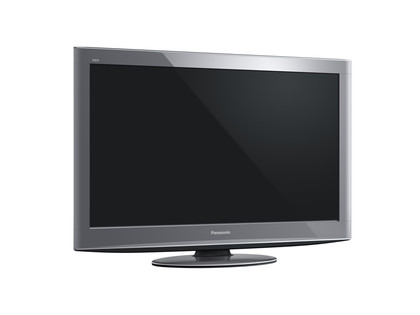Why you can trust TechRadar

Even if the TX-L37V20B wasn't a flagship LCD TV from one of the TV world's biggest brands, its pictures would disappoint.
There's one simple but unavoidable reason for this: backlight inconsistency; while watching predominantly dark scenes it's possible to make out areas of the picture that look brighter than the rest.
The TX- L37V20 is hardly unique in this respect, particularly among edge LED TVs, but the problem affects a few disturbingly large portions of the picture, and as such is more distracting than usual.
It is possible to reduce the aggressiveness/obviousness of the backlight issues if you take care to adjust the contrast and reduce brightness to around 35 per cent, but the point at which the backlight inconsistencies fade to the extent that a discerning eye will be happy with them leaves you with a picture that looks dull and, worse, is severely lacking in shadow detail.
Some other reviews of the L37V20 have suggested that the TrueCinema preset delivers an unusually good picture for an LCD TV and while this may be true in terms of colours and sharpness, the setting suffers extremely badly with backlight inconsistencies until you work your way around them.
The Cinema preset is probably the best starting point, but the bottom line is that no matter what mode you use, the backlight issues are never completely resolved.
This is a pity, because there's no doubt that the TX-L37V20B has got some potent picture tricks up its sleeve. HD pictures are ferociously sharp, for starters, especially when Blu-ray is the source, picking up every last detail from the best discs.
Crucially, the sharpness feels wholly natural, with none of the forced, gritty, edge-stressing nonsense produced by the circuitry of some rival sets.
Colours are frequently superb at time; post-calibration the set produces a really startlingly wide tonal range and proves remarkably adept at combining intense saturations with blend subtlety, even within single frames. Skin tones in particular have seldom – if ever – looked more credible on an LCD TV and for this Panasonic deserves hearty praise.
The TX-L37V20B also handles motion deftly. It's not as adept at spotting different video cadences as it perhaps should be for a flagship TV, but it handles judder nicely and the screen's fast response time irons out most motion blur.
You might even want to give Panasonic's IFC frame interpolation processing a go, for provided you don't set it beyond its lowest level of power, it definitely can reduce judder without producing too many distracting side effects. Some may not like the way it makes 'film' sources look more like video, but it's certainly not the total no-go area found with some motion processing engines.
The TX-L37V20 is also an above-average rescaler of standard-definition. The key to its success appears to be that it doesn't get too caught up with trying to make standard-def pictures look like HD in detail and sharpness terms, instead focusing adeptly on retaining colour tones and reducing noise.
The unusually wide viewing angle is apparent during everyday use and overall there's no question that the TX-L37V20 can produce pictures of mind-boggling quality. It's just a shame that this quality tends to slump during the sort of very dark sequences that find their way into almost any film at some point.
Current page: Panasonic TX-L37V20E: Picture quality
Prev Page Panasonic TX-L37V20E: Features Next Page Panasonic TX-L37V20E: Sound and ease of useJohn has been writing about home entertainment technology for more than two decades - an especially impressive feat considering he still claims to only be 35 years old (yeah, right). In that time he’s reviewed hundreds if not thousands of TVs, projectors and speakers, and spent frankly far too long sitting by himself in a dark room.

